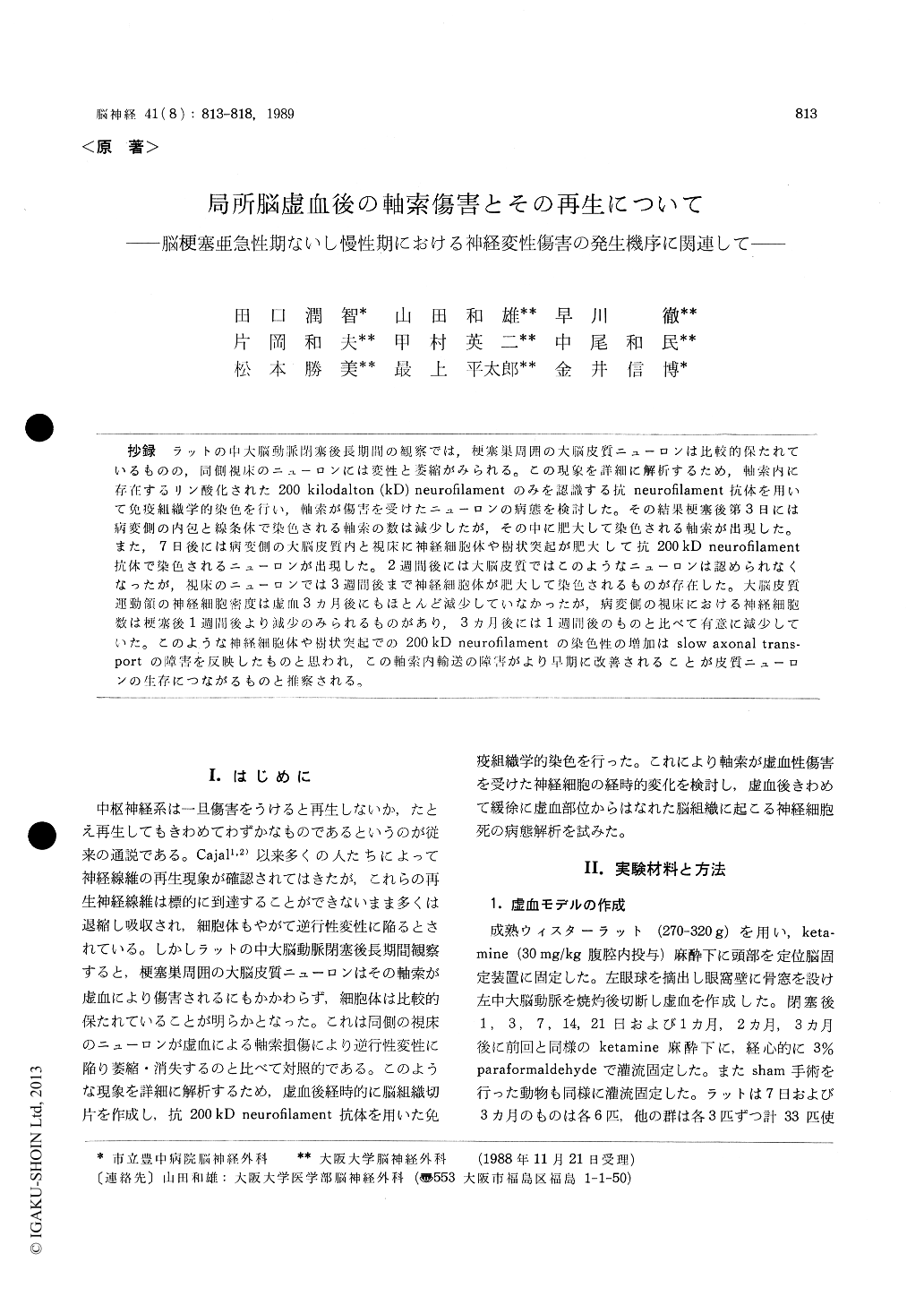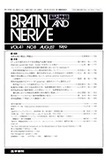Japanese
English
- 有料閲覧
- Abstract 文献概要
- 1ページ目 Look Inside
抄録 ラットの中大脳動脈閉塞後長期間の観察では,梗塞巣周囲の大脳皮質ニューロンは比較的保たれているものの,同側視床のニューロンには変性と萎縮がみられる。この現象を詳細に解析するため,軸索内に存在するリン酸化された200kilodalton (kD) neurofilamentのみを認識する抗neurofilament抗体を用いて免疫組織学的染色を行い,軸索が傷害を受けたニューロンの病態を検討した。その結果梗塞後第3日には病変側の内包と線条体で染色される軸索の数は減少したが,その中に肥大して染色される軸索が出現した。また,7日後には病変側の大脳皮質内と視床に神経細胞休や樹状突起が肥大して抗200kD neurofilament抗体で染色されるニューロンが出現した。2週間後には大脳皮質ではこのようなニューロンは認められなくなったが,視床のニューロンでは3週間後まで神経細胞体が肥大して染色されるものが存在した。大脳皮質運動領の神経細胞密度は虚血3カ月後にもほとんど減少していなかったが,病変側の視床における神経細胞数は梗塞後1週間後より減少のみられるものがあり,3カ月後には1週間後のものと比べて有意に減少していた。このような神経細胞体や樹状突起での200kD neurofilamentの染色性の増加はslow axonal trans-portの障害を反映したものと思われ,この軸索内輸送の障害がより早期に改善されることが皮質ニューロンの生存につながるものと推察される。
After focal cerebral infarction by occluding the middle cerebral artery (MCA) of the rat, the neu-ronal death occured in the ipsilateral thalamicneurons, because axons of the thalamic neurons were injured by infarction and retrograde dege-neration occured in the thalamic neurons. How-ever, cortical neurons adjacent to the infarction survived despite their axons injured by ischemia. We employed immunohistochemical staining for 200 kilodalton (kD) neurofilament (NF), in order to study those responses of cortical and thalamic neurons against axonal injury caused by focal cerebral infarction. In the sham operated rats the immunoreactivity to the anti-200 kD NF antibody was only detected in the axon but not in the cell bodies and dendrites. At 3 days after MCA occlu-sion, axonal swelling proximal to the site of ischemic injury was found in the caudoputamen and internal capsule of the ipsilateral side. At 7 days after occlusion, cell bodies and dendrites of the neurons in the ipsilateral cortex and thalamus were strongly stained with anti-NF antibodies. At 2 weeks after occlusion these responses disap-peared in the cortex, but lasted in the thalamus. These phenomena are caused by stasis of the slow axonal transport, because the NF is transported by slow axonal transport. In the cortical neurons impairment of slow axonal transport recovered in the early phase after injury, but in the thalamic neurons the impairment prolonged up to 3 weeks after occlusion. The early recovery of axonal transport from ischemia seemed to be essential for survival of neurons after ischemic axonal injury.

Copyright © 1989, Igaku-Shoin Ltd. All rights reserved.


